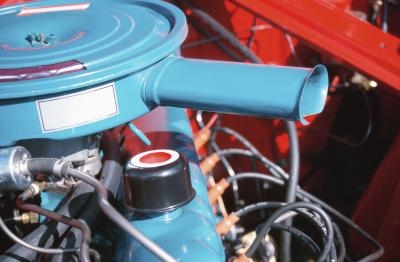
Multimeters perform a variety of tests on electrical systems in the home and on cars. An automotive multimeter has an added function of measuring the revolutions per minute (RPM) on a vehicle with the use of an RPM inductive pickup. This accessory clamps on each of the spark plug wiring harnesses to read each spark that is initiated by a spark plug and display it in the RPM format.
Turn off the engine on the car and open the hood.
Insert an RPM inductive pickup plug into an automotive multimeter with the negative and positive signs facing you in the bottom left jack holes. The positive lead plugs into the RPM jack and the negative portion of the lead plugs into the amperage jack underneath it.
Turn the rotary dial on the multimeter to "RPM (1) (2)" to turn the meter on. The current RPM setting of 1 or 2 will appear in the display on the right side. Press the oval button in the center of the rotary dial to change from RPM 1 to RPM 2. RPM (1) reads the revolutions per minute on engines that fire once per every two revolutions. The RPM (2) setting is for engines that fire on each revolution.
Clamp the inductive pickup's front lead to a wire above a spark plug top.
Clamp the second spark plug wire in the back of the inductive pickup to the end of the wiring harness that leads to the distributor near the distributor cap.
Start the engine. Read the RPM speed on the digital display.